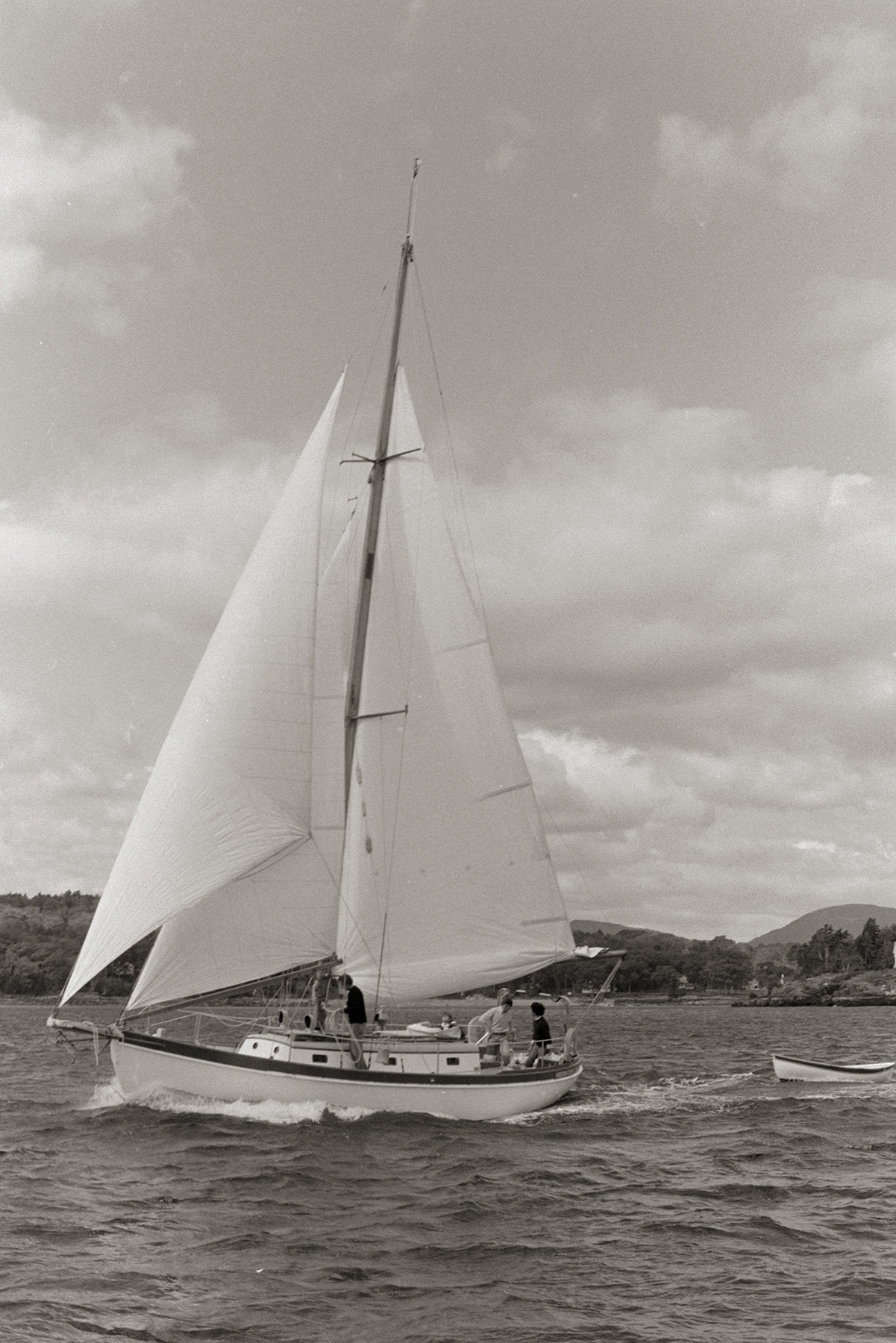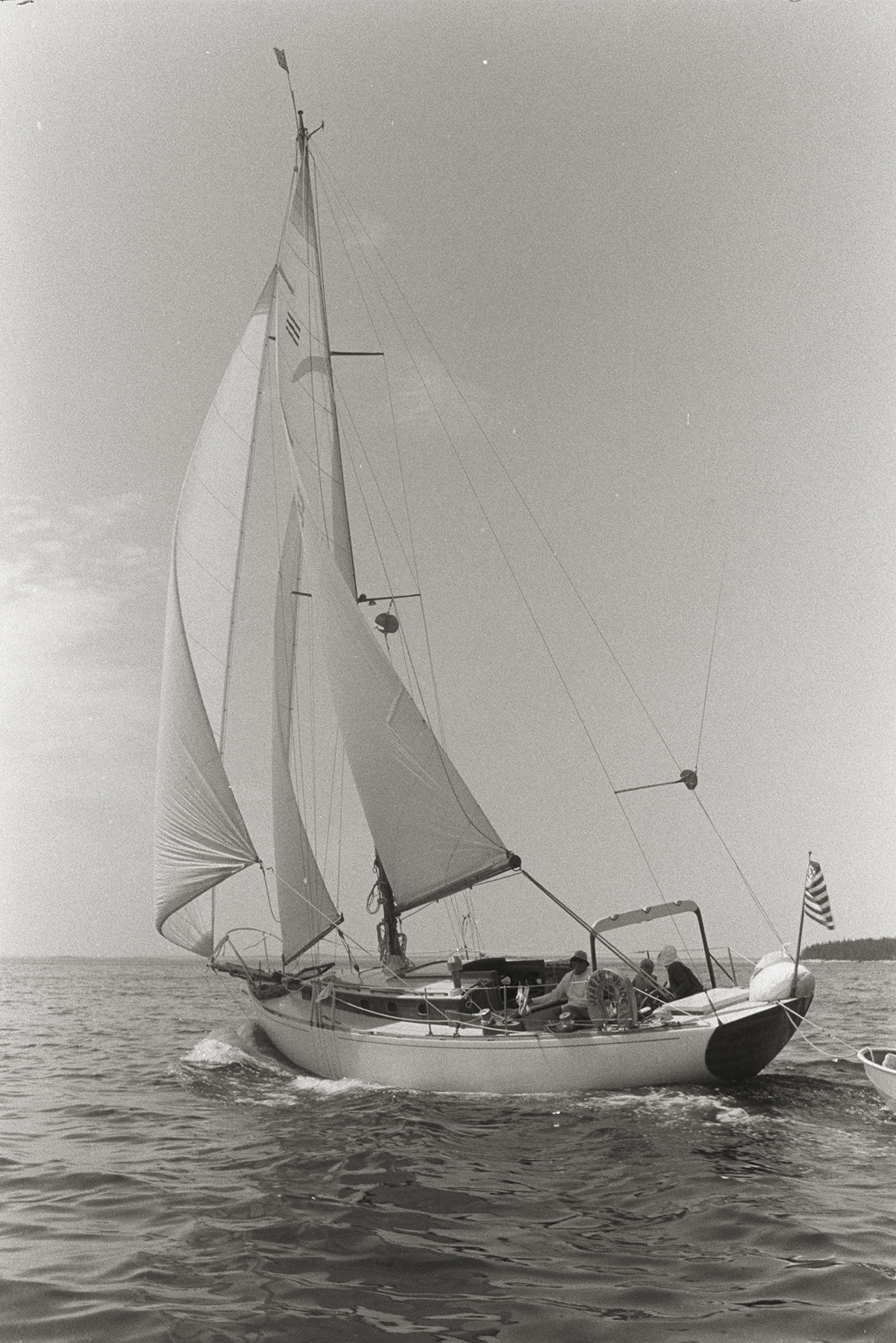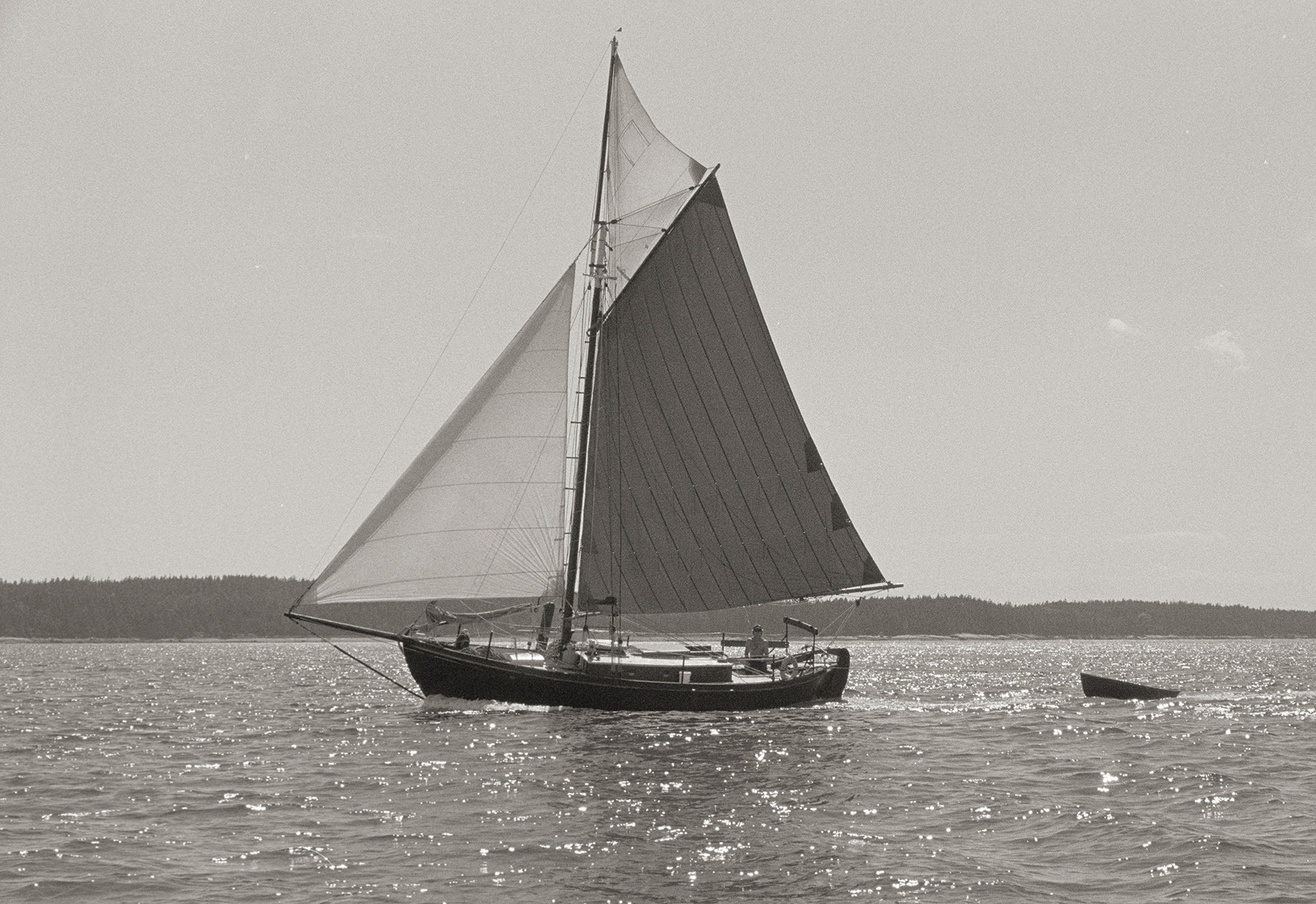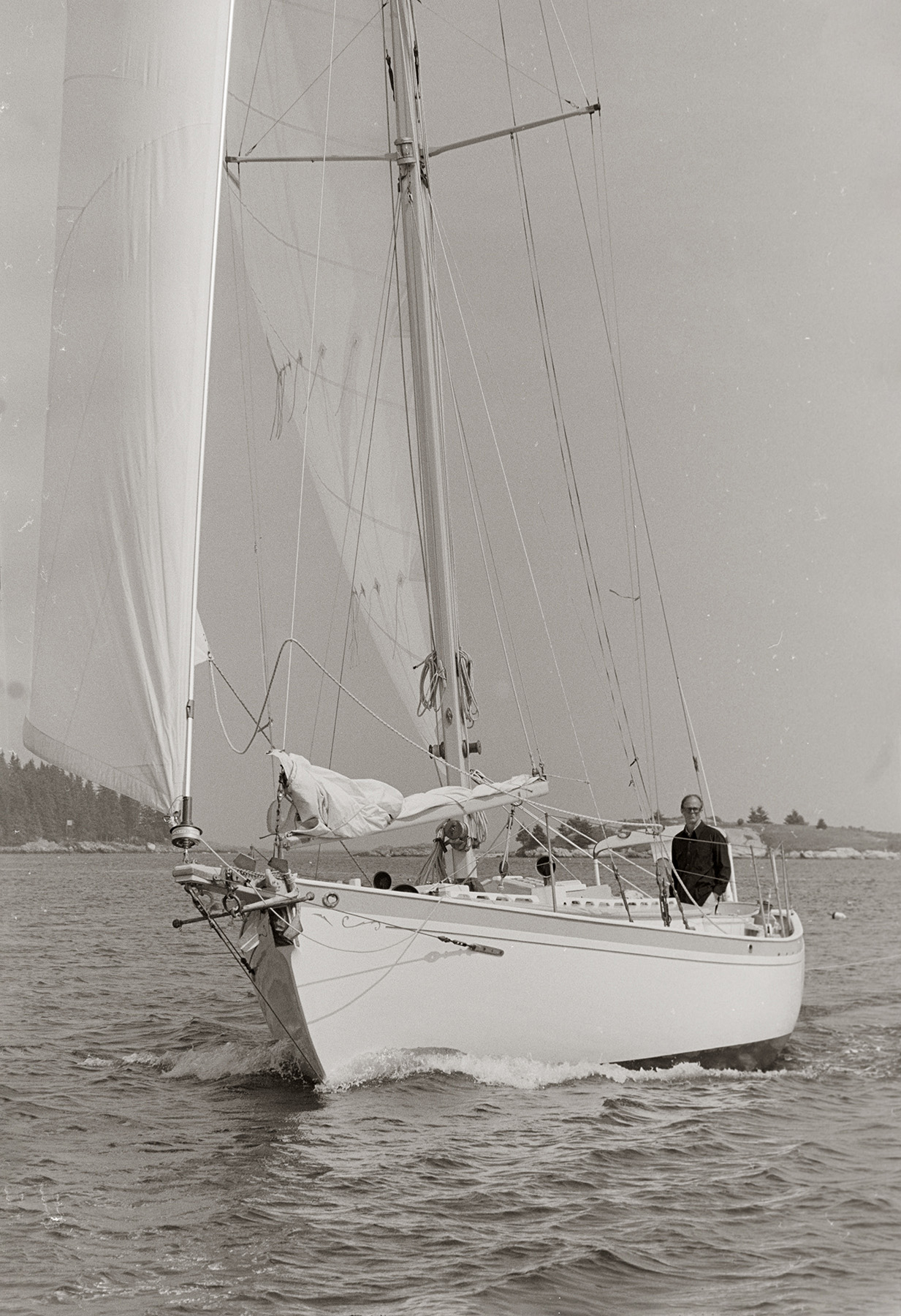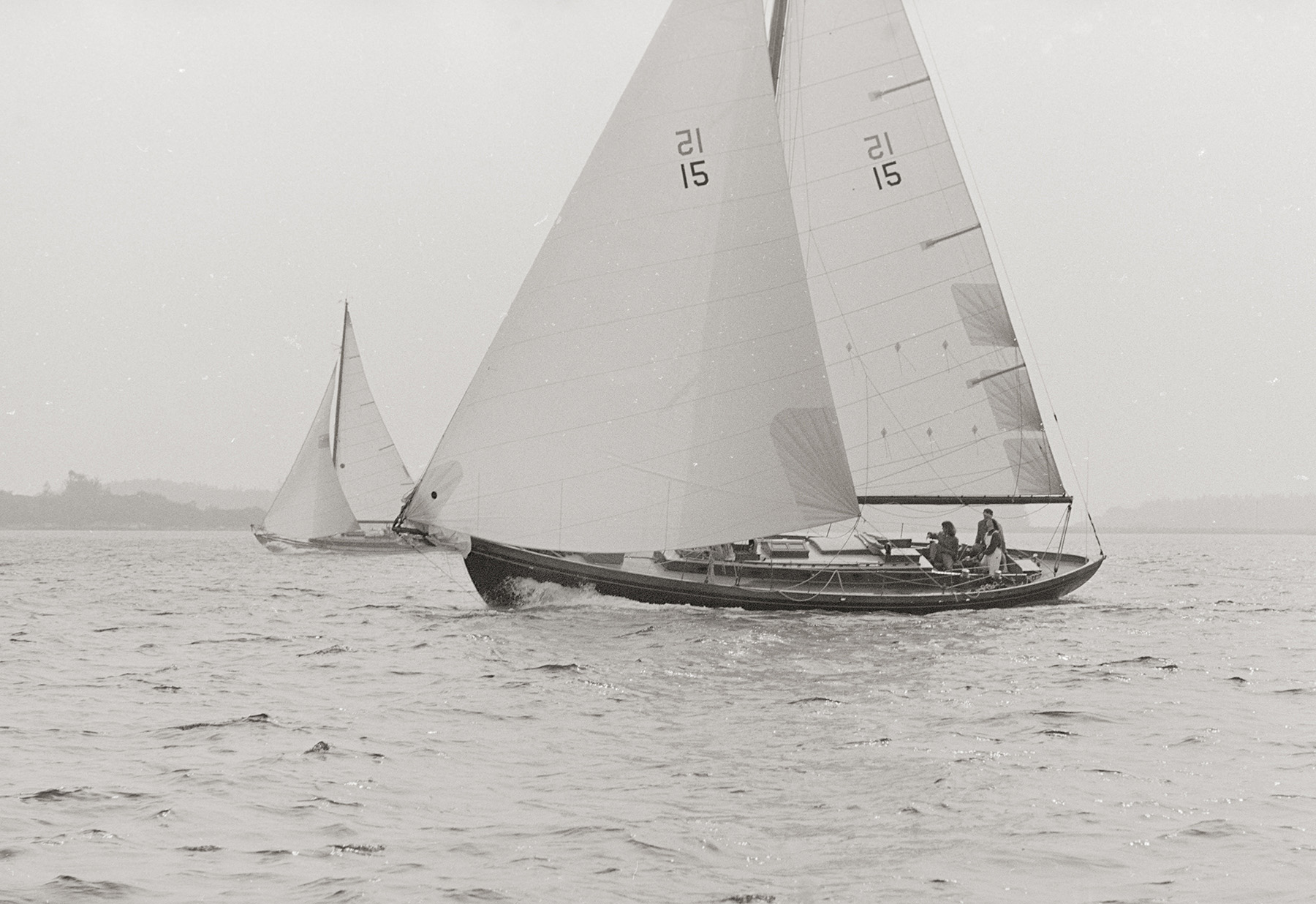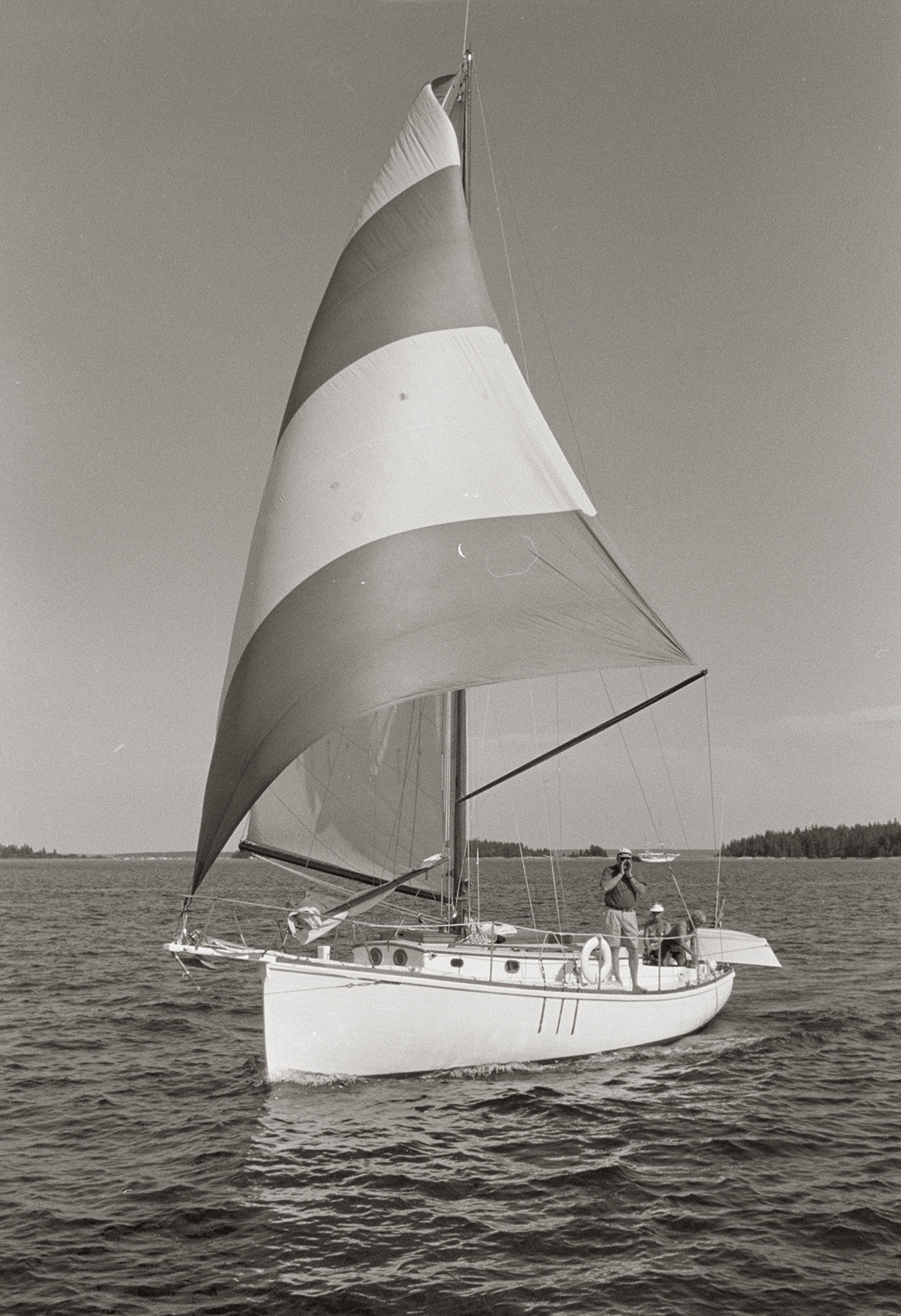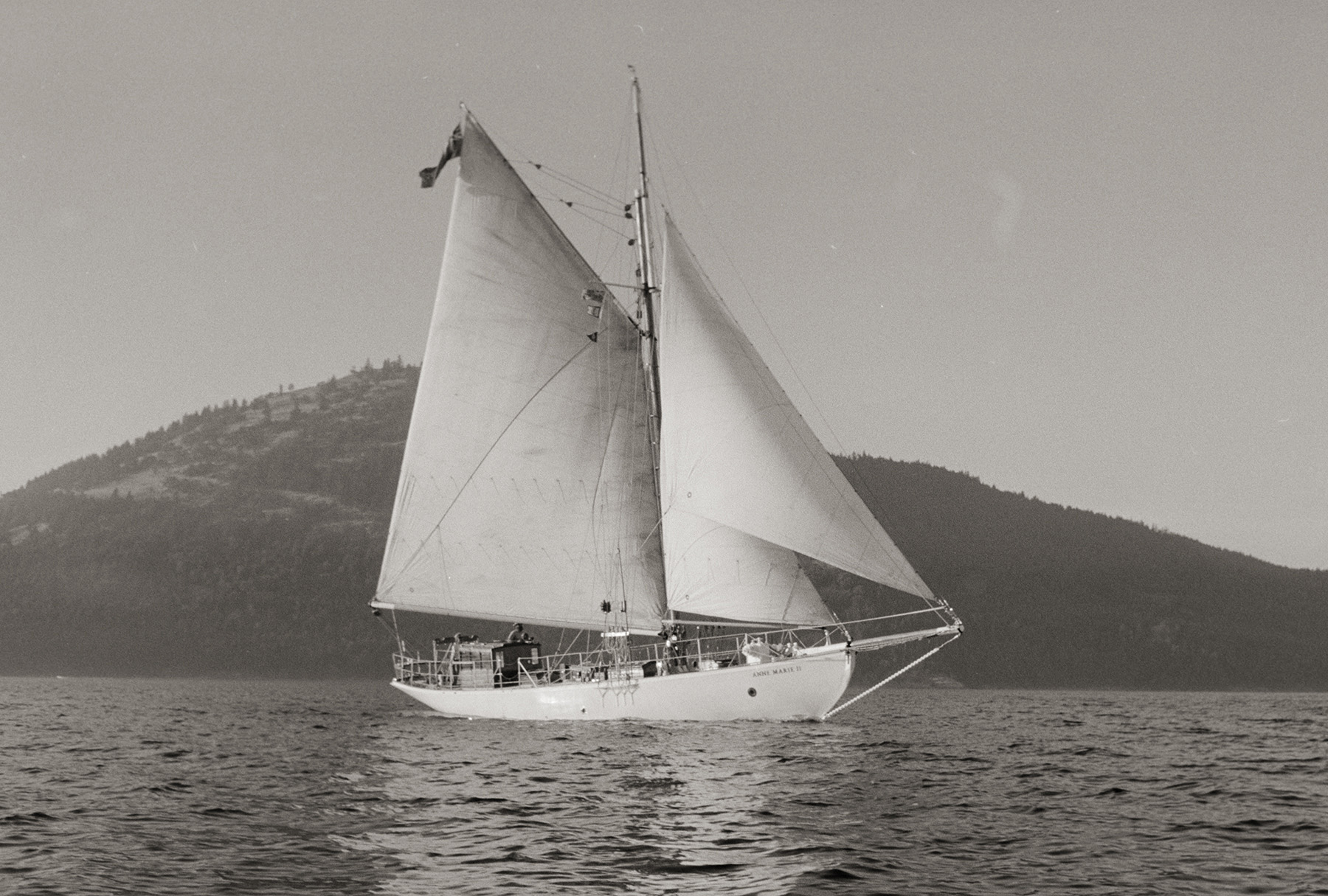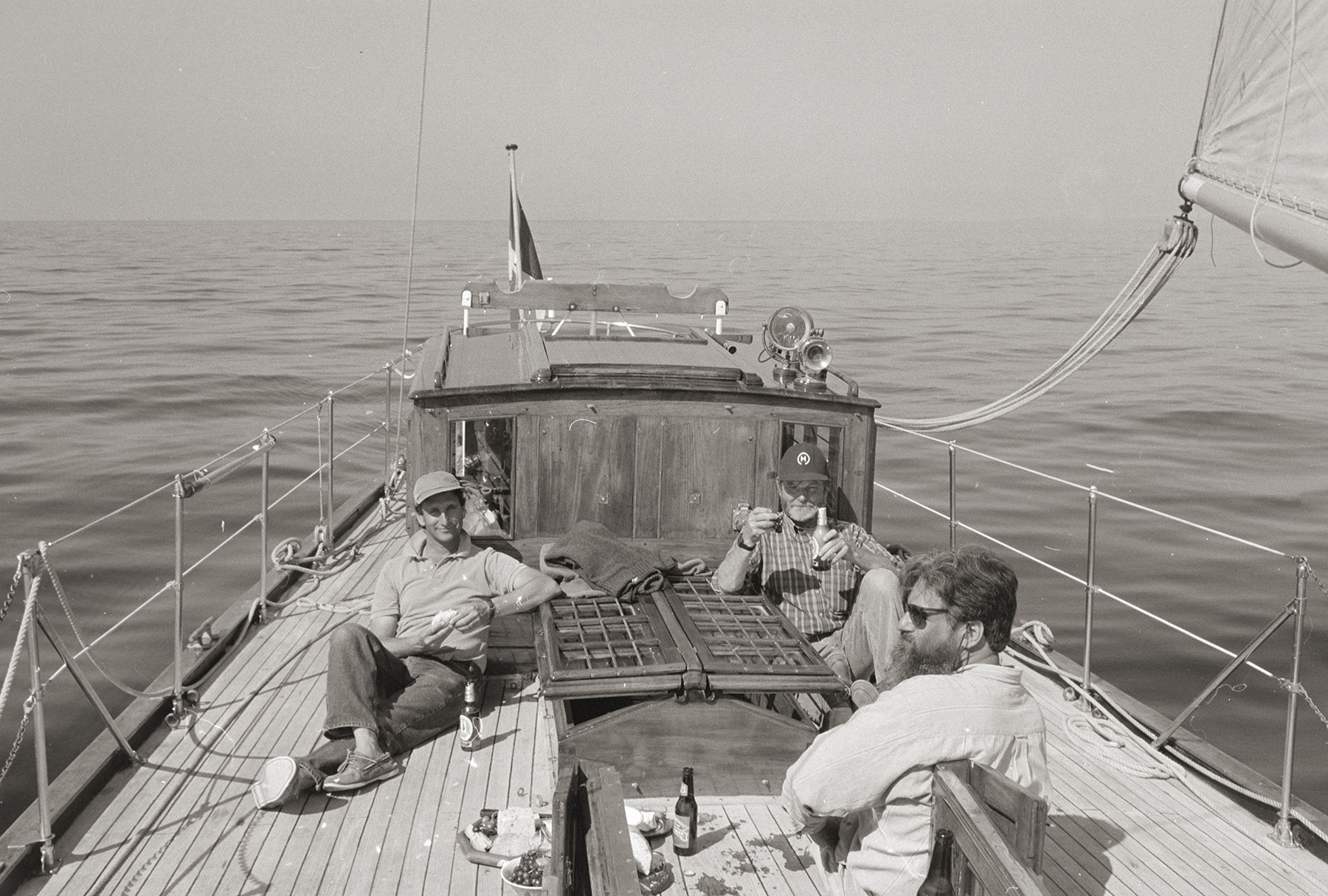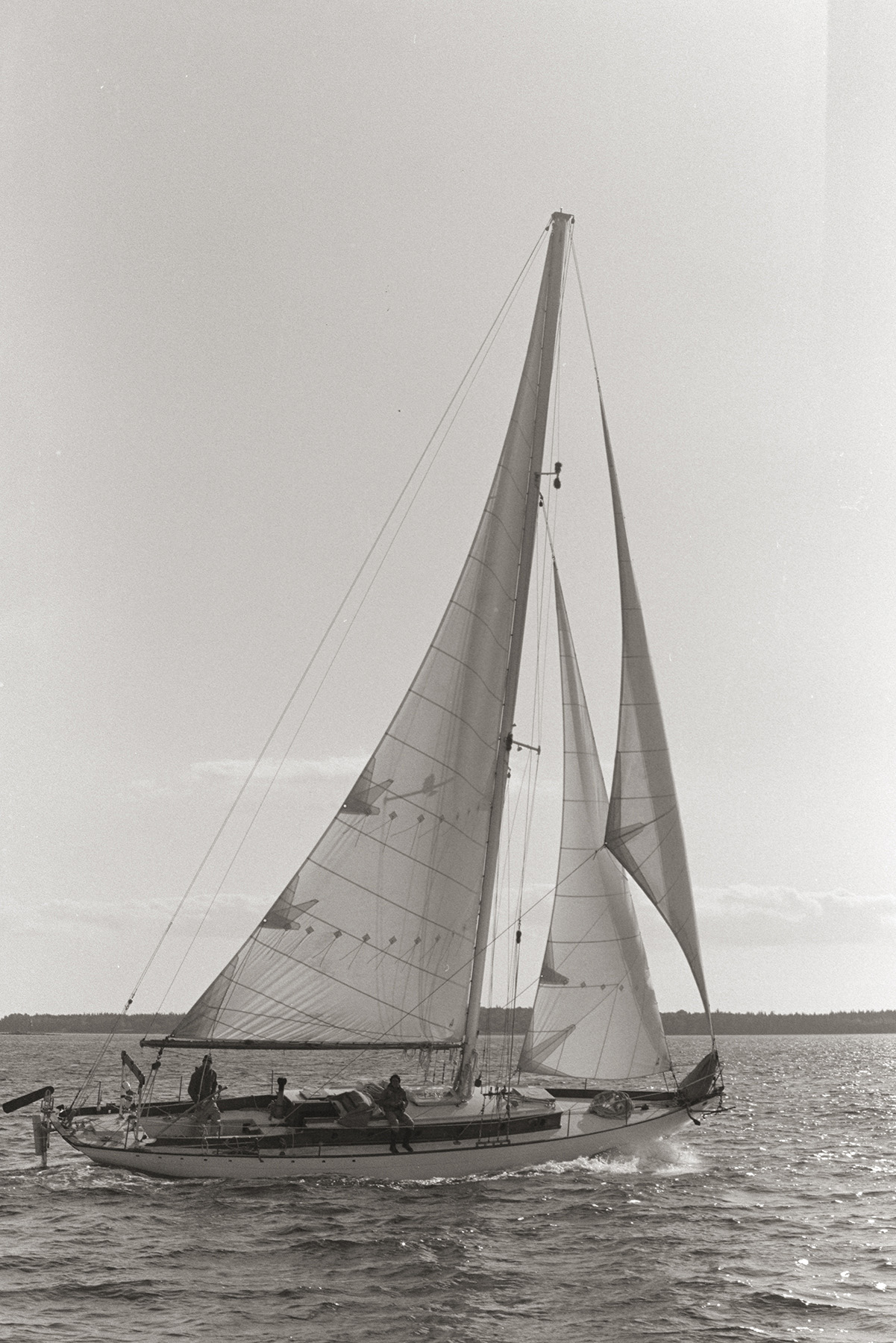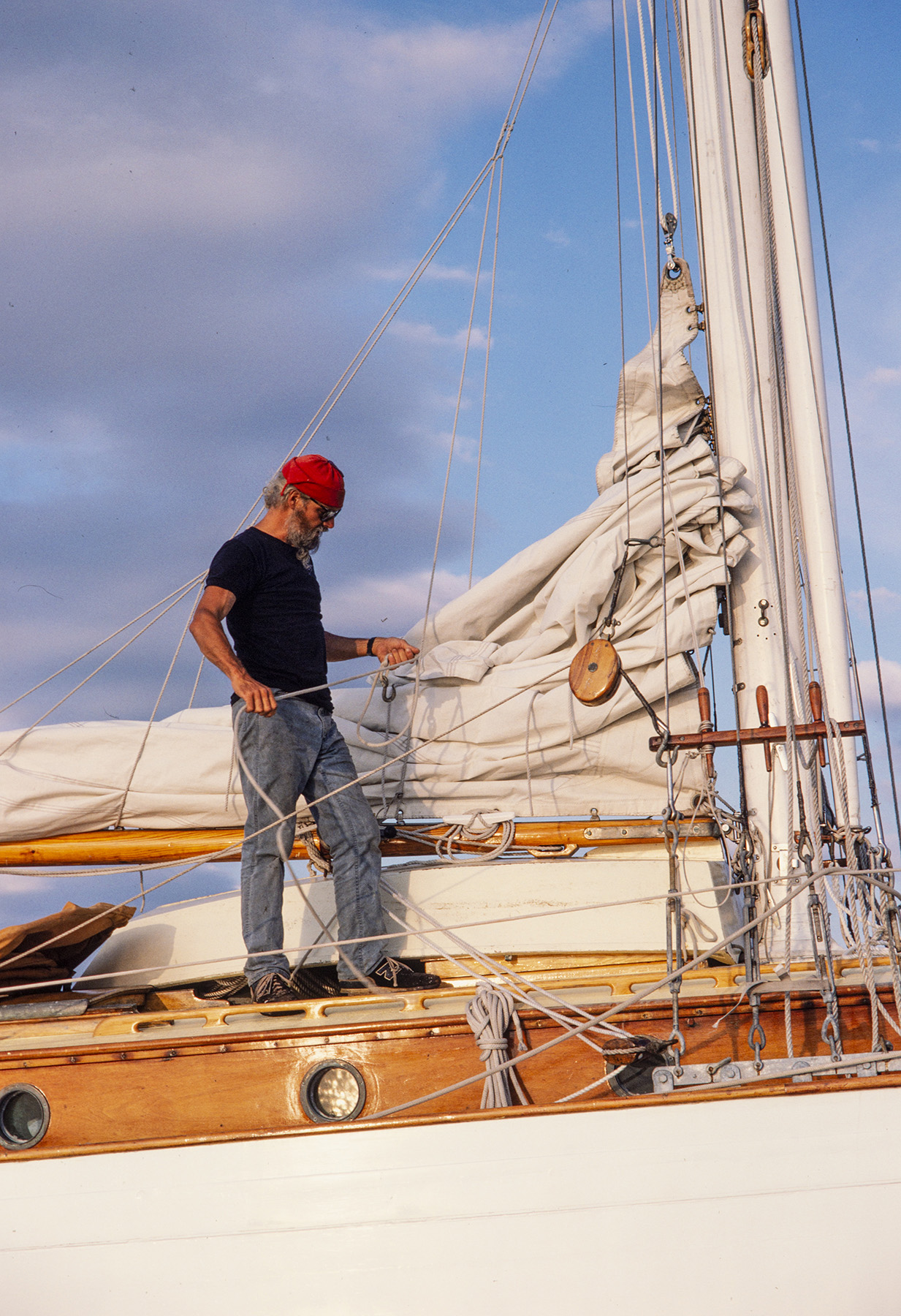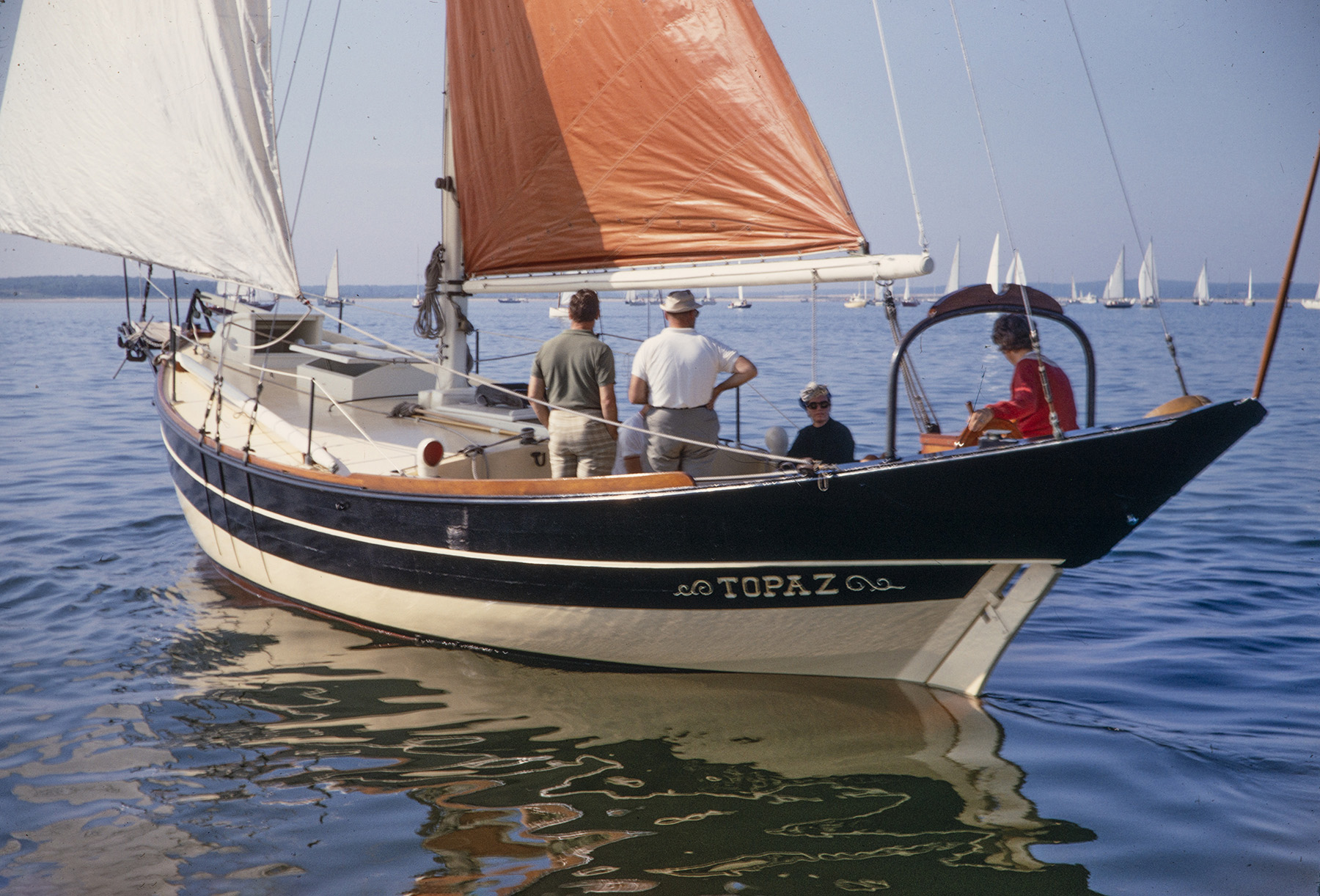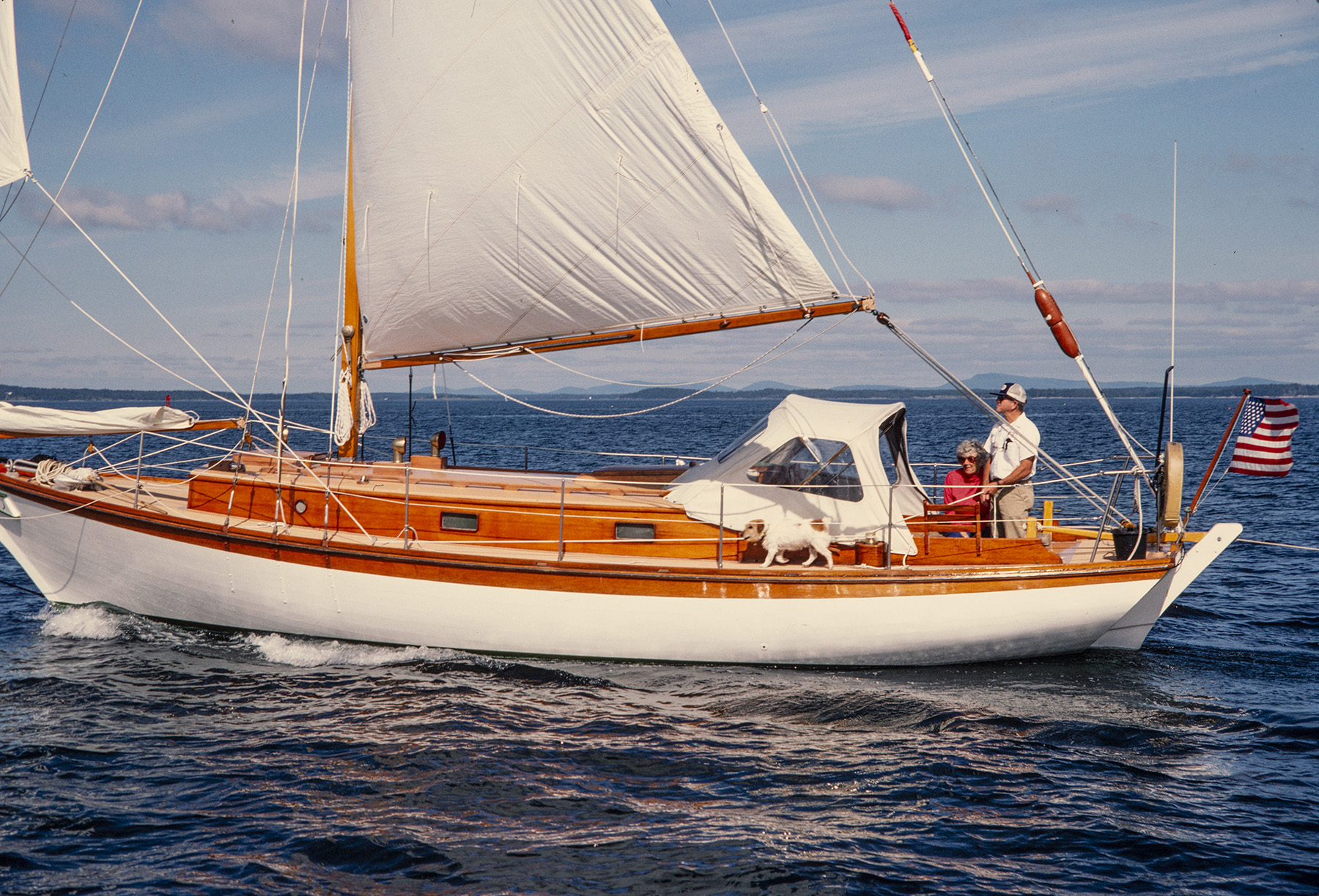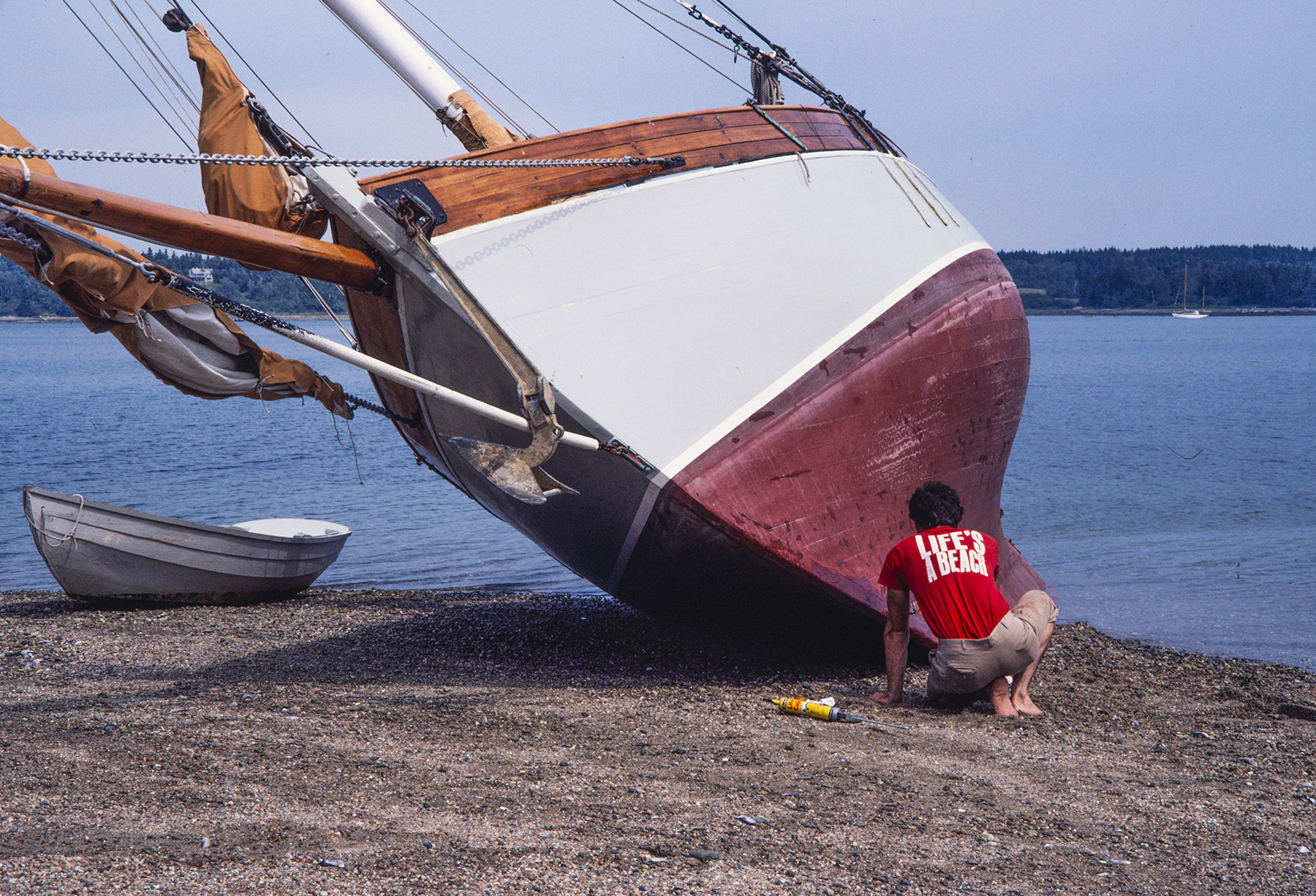Kudos to Cutters
Sailboat design is endlessly inventive. It’s a best attempt to produce a highly dynamic machine that will be efficient and reliable, sometimes in a narrow range of conditions. They are purpose-built: a sailboat that’s perfectly suited to gunkholing would be a sketchy vessel for a transatlantic crossing.
A few rigs and hull types have become the dominant choices for the demands of offshore cruising, remote from land and subject to powerful weather. Preferences and opinions vary, perhaps strongly. This month, through the 40-year catalog of Maynard’s photography, we take a hard look at the cutter, a common and solid choice for blue water sailing.
The mast on a cutter is pulled back farther than on a typical sloop, creating a larger area (foretriangle) between the mast and the forestay. A second forestay and the large foretriangle allow two foresails (the sails forward of the mast) instead of a large single jib or genoa. These smaller sails create a lot of options for adjusting the sail plan to deal with varying wind conditions. The intrusion of the mast in the cabin area is a design challenge, but for many, the stability of the rig makes it worth the sacrifice.
Says one Falmouth cutter owner we spoke to:
“As mostly a single-hander I find the cutter rig to be a versatile and powerful and easily managed arrangement. The smaller main and two headsails mean there are many combinations of smaller more easily handled sails to help balance the rig and keep me on my way in all conditions. The two headsails help to create a powerful slot effect that help keep the boat driving forward in all kinds of sea conditions. And besides, it looks just awesome.”
